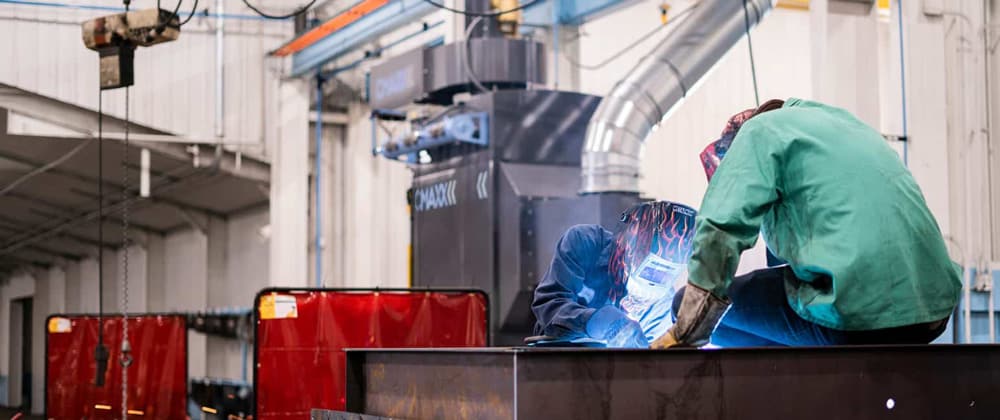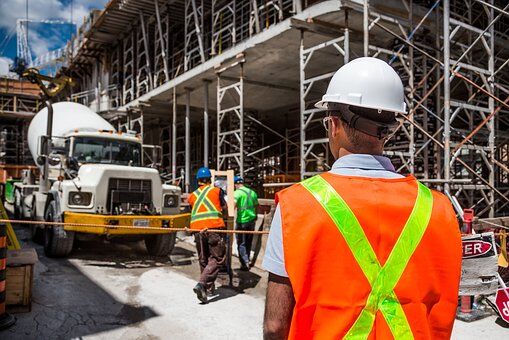“Have you ever gone through your house and tried to spot everything that a curious baby might get into? If you’re looking at dust safety in your shop, start thinking about dust like a baby who just figured out how to open the kitchen drawers and pull things off the coffee table.
Like your adorable little force of destruction, dust in your shop can get into things you didn’t even think of. A dust hazard analysis is the first step in creating a shop safe from combustible dust hazards. Once you’ve identified possible problems, you can start fixing them.
Dust-Proofing Your Shop for Safety
Before the end of 2020, NFPA standards will require all dust-producing businesses to have a dust hazard analysis. A dust hazard analysis means going through the facility and identifying anywhere that dust could present a danger in the shop.
It’s important to identify whether your dust is combustible, but even noncombustible dust presents a safety issue in the shop. Finding every possible dust safety risk seems impossible. Of course, if you’ve ever tried to baby-proof a house with a curious little monster exploring everything, you know there’s always something you didn’t think of.
Shop dust safety requires ongoing work and awareness. If you’re baby-proofing, you may think you’ve gotten everything out of reach or locked away. Ten minutes later, you’ll be confiscating a bottle of laundry detergent that seems to have appeared out of nowhere.
Shop dust pulls the same kind of tricks. After you and your staff have put in hours of work cleaning up accumulated dust, or you’ve made a big investment in a dust collection system, dust will show up in places you didn’t expect.

The Ongoing Process of Shop Dust Safety
As soon as you think your home is baby-proof, you’ll turn around and realize you have a toddler who can now reach all kinds of new, exciting things. Your shop might experience some growth and changes, too. New processes or new machines can create new shop dust hazards.
To protect your newly mobile little darling, you’ll start finding hazards you hadn’t recognized before. After all, your crawling baby couldn’t yank houseplants off the coffee table. Every time something changes in your shop, new dust hazards could appear.
That doesn’t mean you’re being irresponsible. It just means that you need to reassess the problems and keep them under control. Just like a parent, you’ll have to keep adapting to change. Growing pains happen to children and to businesses.
Steps for a Dust Hazard Analysis
Lots of parenting magazines can guide you through baby-proofing the house. You have many resources available to help you conduct a dust hazard analysis. To start, here a few important places to start looking for possible shop dust problems:
- Machines or processes that are producing dust in the facility
- Places where dust accumulates (in corners, under things, on overhead lights or beams)
- Possible ignition sources (sparks, heaters, hot surfaces)
- Shop activities that might spread dust or make it airborne (blowing with compressed air)
- Activities that need to be assessed for possible hazards (hot work that could ignite dust)
- Places where staff education is needed (housekeeping, situational awareness)
Shop dust safety should start with engineering controls if possible, as recommended by OSHA and the NFPA. A well-designed dust collection system will remove airborne dust before it can escape and accumulate around the shop. Source capture hoods can be put over machines that produce problem dust.
Parents probably wish we made a CMAXX that could clean up after a toddler. Unfortunately, no piece of equipment we’ve ever seen can keep up with that kind of disaster. There’s not much that can manage a two-year-old who tries to flush dinosaur toys down the toilet and throws pudding at the cat.
At least we can help you with your shop dust safety.”
– From Imperial Systems 12/19/19
https://www.isystemsweb.com/shop-dust-safety-is-like-baby-proofing-your-house/


